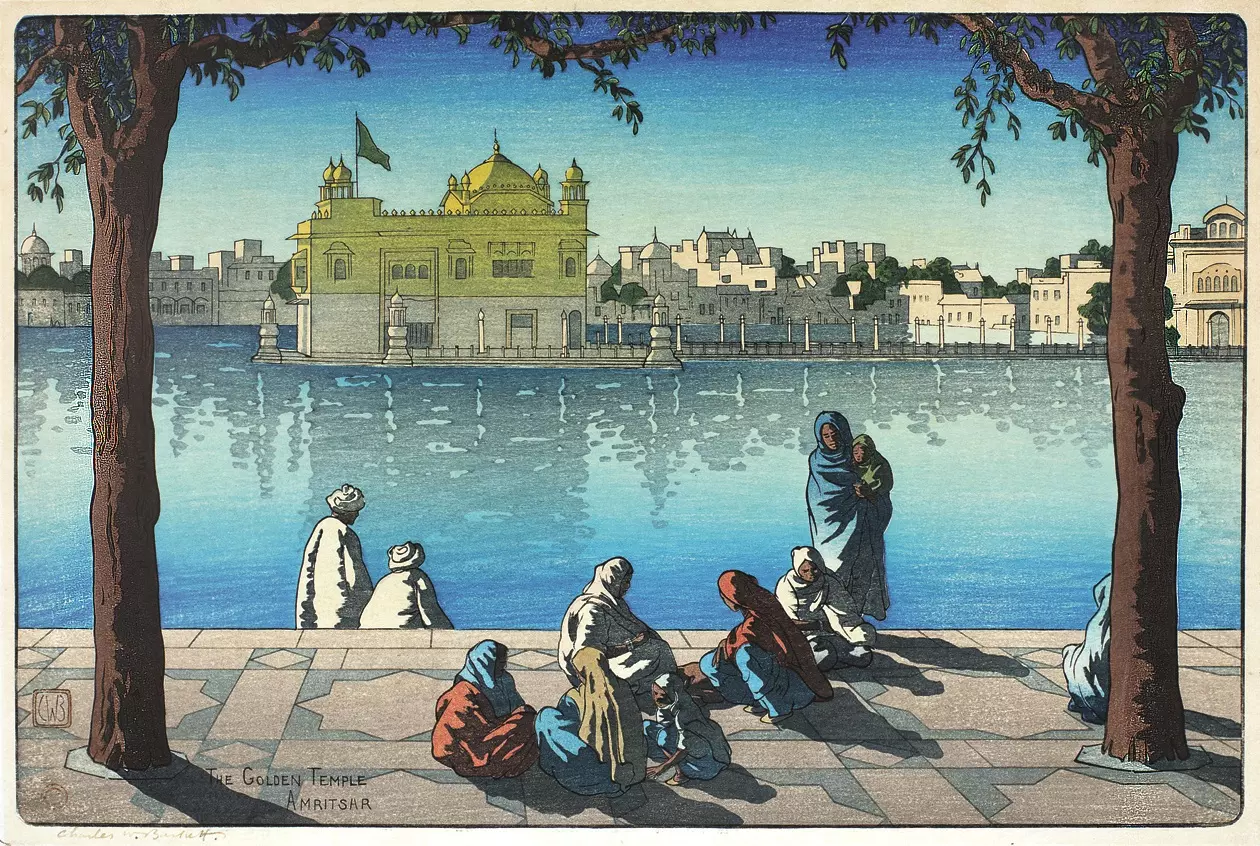A perfect frame of ‘The way we are'
The exhibition (Destination India, Foreign Artists in India 1857–1947) gives a glimpse into the way foreign artists brilliantly captured India on their canvases

It is not easy to capture the various cultures, rich traditions, and myriad landscapes of a diverse country like India, but a few celebrated foreign artists have managed to capture the soul of India through their art. The exhibition Destination India, Foreign Artists in India 1857–1947 gives us a glimpse into the way foreign artists captured India’s unique landscapes, grand monuments, vibrant traditions, and rich history on their canvases. By focusing on the period between 1857 and 1947, the show uncovers a forgotten archive of painters and printmakers in a fast-changing (colonial) India, in a period when images were being transmitted as picture postcards (from 1880 onwards) and photography had become the dominant medium of documentation. The curator of the show, Giles Tillotson, Senior VP, of DAG Gallery says, “The range and variety of nations represented, including Germany, Austria, France, Holland, Denmark, Japan, the USA as well as Britain make this exhibition striking. There are artists from 12 countries in total including Marius Bauer (Dutch), Hugo Pederson (Danish), Hiroshi Yoshida (Japanese), and Edwin Lord Weeks (American) along with reputed British artists.” The works include oil paintings, watercolours, etchings and woodblock prints are mostly naturalistic landscapes and genre scenes in styles that might loosely be called post-impressionist. Through a vivid color palette these artists captured the essence of the country – from its riches and its monuments to the clothes of the locals, the trees and flowers of the garden, and the parakeets. All little elements are uniquely Indian. While a few of them were specifically commissioned, the artists also made them for sale in Europe. The exhibition also includes work by British artists such as William Carpenter who went on to become one of the most reputable portraitists and landscape painters of the 19th Century as well as Charles William Bartlett who was one of the world’s finest Japanese ukiyo-e woodblock printmakers.
Different Perspectives
The works on display showcase the changes in the prevailing atmosphere. With the transfer of power from the Company to the Crown, the political environment changed. Advances in transport technology — especially the spread of the railways — changed the logistics of travel. Audiences abroad had grown familiar with India’s famous sites and required new topics and fresh approaches. The artists who came to India in this later period engaged with it in ways quite different from the pioneers of an earlier age. The paintings of this period expose India’s historical culture to Western viewers. While the subjects might be the same – from the Taj Mahal and the Ghats of Benares to the crumbling palaces and landscapes – the artists offer more personal views of Indian life. Apart from the ‘mutiny cities’ like Lucknow, Cawnpore (Kanpur), and Delhi, this new generation of artists also explored novel places be it the lakes and mountains of Kashmir or the cities of Rajasthan which were among the new areas to be explored. By the late 1800s, India's historical highlights had become well-known. Artists of the era turned their focus to contemporary India, capturing the vibrancy of daily life in bazaars and havelis. They were drawn to portray ordinary people on the streets, not just the elite. This shift gave the picturesque a livelier and personal touch, such as depicting riverside ghats not just for their ancient architecture but for the brightly clothed individuals who frequented them.
A peek into the past
These paintings give more than a glimpse of the past. Giles adds, “Many of the artworks contain elements of exoticism or romanticism. But they also show an engagement with Indian people and their daily lives (as seen in markets and at places of worship) that was rare in earlier foreign views of India. They do therefore have historical and ethnographic value if you can see past orientalism.” The works on display offer a window into an era when India was viewed through different perspectives, from Oriental to Victorian, while also highlighting a shift in how the country was perceived and engaged with, as it became more connected with the Western world. The exhibition brings artwork back and on display in the subcontinent, many of them almost a century after they were made, making it a treat to visit. It draws attention to an overlooked period and takes the visitors on discoveries!
